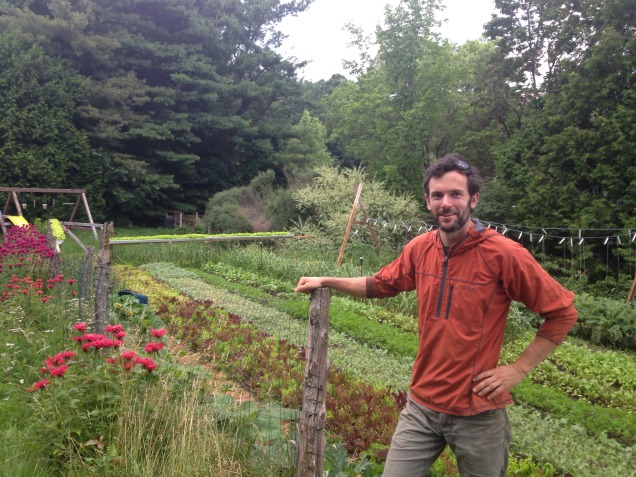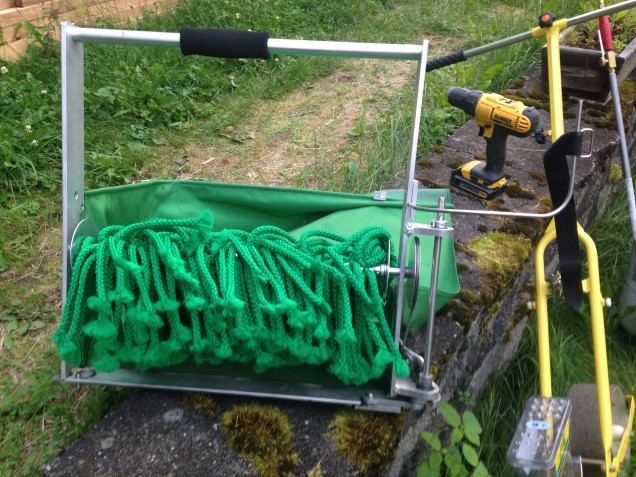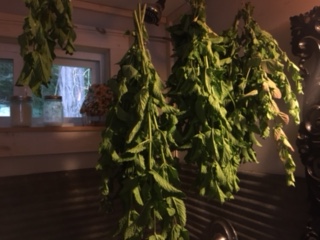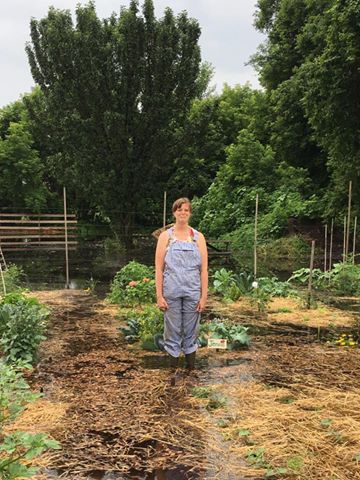This week, students from the Community Teaching Garden visited one of the sites for Queen City Acres in Burlington’s New North End. Nestled behind a home on a quiet cul-de-sac, one would not expect to find such a dense and productive growing space. It was there we met Ethan Thompson, the urban homesteader behind Queen City Acres.

For the CTG students, this was a great opportunity to learn more about some of skills, practices, and tools that can be helpful when transitioning to growing on a larger scale or using a production model. Our plots at the Ethan Allen Homestead and Tommy Thompson Community Gardens tend to measure around four by twenty feet. Ethan’s growing space in the New North End is about one tenth of an acre. While it is densely planted, it is spacious enough that his plants appear happy and healthy and clearly produce a high yield.

Many of the CTG students were particularly interested in the scaffolding Ethan uses to grow his tomatoes, implementing a lower and lean technique (see above). He also had an interesting collection of tools which make managing his homestead with just a small, dedicated crew of weekly volunteers a feasible venture. Among the tools that were new to students were the tilther, the jang seeder, the flame weeder, and the Quick-Cut Greens Harvester. Both the tilther and the greens harvester are powered by a cordless drill, and it was fun to see a common tool repurposed to power garden equipment.

Thank you again to Ethan for taking the time to show us around, and for making our visits to your homestead both educational and fun!
To learn more about Queen City Acres, check out their website, Facebook page, or stop by one of their weekly pop-up markets at MetroRock Station in Essex (Thursdays 6-9) or Scout & Co. in the Old North End (Fridays 4-7).








